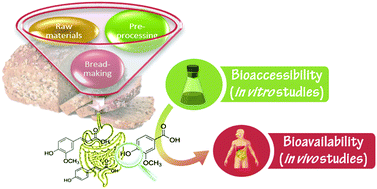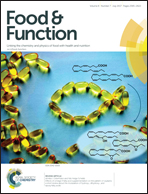Bioaccessibility and bioavailability of phenolic compounds in bread: a review
Abstract
Cereal-based products, like breads, are a vehicle for bioactive compounds, including polyphenols. The health effects of polyphenols like phenolic acids (PAs) are dependent on their bioaccessibility and bioavailability. The present review summarizes the current understanding of potential strategies to improve phenolic bioaccessibility and bioavailability and the main findings of in vitro and in vivo studies investigating these strategies applied to breads, including the use of raw ingredients with greater phenolic content and different pre-processing technologies, such as fermentation and enzymatic treatment of ingredients. There is considerable variability between in vitro studies, mainly resulting from the use of different methodologies, highlighting the need for standardization. Of the few in vivo bioavailability studies identified, acute, single-dose studies demonstrate that modifications to selected raw materials and bioprocessing of bran could increase the bioavailability, but not necessarily the net content, of bread phenolics. The two medium-term identified dietary interventions also demonstrated greater phenolic content, resulting from the modification of the raw materials used. Overall, the findings suggest that several strategies can be used to develop new bread products with greater phenolic bioaccessibility and bioavailability. However, due to the large variability and the few studies available, further investigations are required to determine better the usefulness of these innovative processes.



 Please wait while we load your content...
Please wait while we load your content...